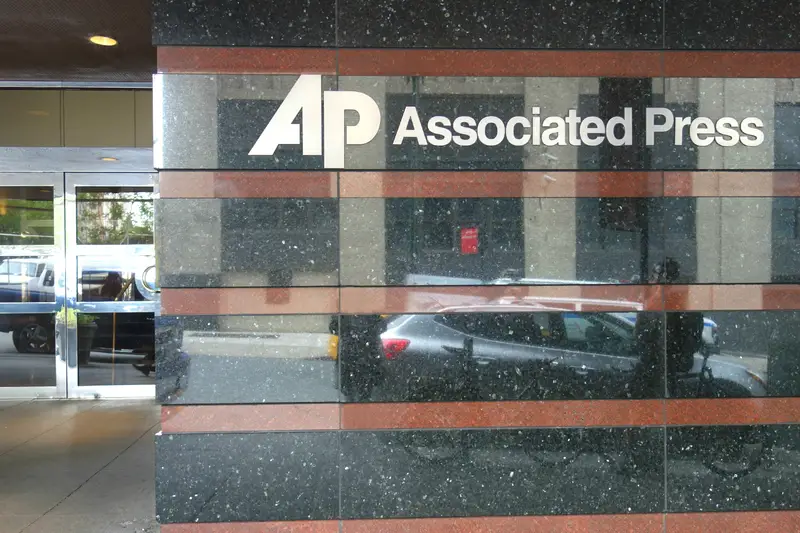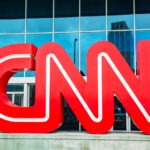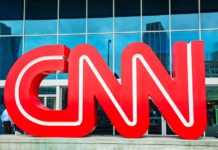The Associated Press (AP) reporter was prohibited from attending an executive order signing at the Oval Office on Tuesday, February 11, 2025, by the White House. This was in response to the news organization’s refusal to modify its editorial guidelines to include President Donald Trump’s executive order which changes the name of the Gulf of Mexico to the Gulf of America. This action has further escalated tensions between the Trump administration and mainstream media outlets.
“The White House informed us today that our refusal to adjust our editorial standards to President Donald Trump’s executive order renaming the Gulf of Mexico as the Gulf of America would result in AP being excluded from an Oval Office event,” AP Executive Editor Julie Pace stated in a prepared announcement. She also noted that an AP reporter was barred from attending an executive order signing that afternoon.
Pace expressed her deep unease, stating the decision by the Trump administration to penalize the Associated Press for its independent journalism was not only disturbing but also without precedent. She emphasized that restricting the AP’s access to the Oval Office based purely on its reporting content greatly impedes public access to essential, independent news and is a clear infringement on the First Amendment’s protections of press freedom and free speech.
The Associated Press, responsible for the AP Stylebook, a key reference for the journalism industry regarding consistency in terminology, abbreviations, and spelling, has held fast to its position to persist in using the original name. The AP defended its stance, pointing out that the geographical feature has been known as the Gulf of Mexico for over four centuries, and no international entity has recognized the new nomenclature.
The White House Correspondents’ Association criticized the barring of the AP reporter as “unacceptable” and urged the Trump administration to “immediately change course.” They underscored that the president should not dictate how the media report the news and warned that such restrictions could establish a dangerous precedent for press freedom.
The event from which the AP reporter was excluded involved substantial alterations to government workforce policy. Trump ordered federal department leaders to devise plans for “large-scale reductions in force,” introducing a new policy that states the government can only hire one person if four others depart. Elon Musk, the head of the Department of Government Efficiency, attended the ceremony and brought his son, X Æ A-Xii, to the Oval Office for the signing, while sporting a MAGA hat.
The conflict over the Gulf’s name originated from an executive order Trump signed on January 15, 2025, shortly after the start of his second term. The order called for renaming the waters bordered by the southern United States, Mexico, and Cuba as the Gulf of America, and Trump declared February 9, 2025, as Gulf of America Day. His administration has been actively encouraging private companies to update their maps with the new name through the Department of the Interior and other federal agencies.
Several prominent technology companies have already complied. Google Maps updated its platform for U.S.-based users to show the change, while keeping the traditional name for international users. Industry sources reveal that Apple Maps implemented similar changes for its domestic users.
While some companies have complied, the AP adopts a more cautious approach towards geographic name changes. The organization agreed to use “Mount McKinley” for the Alaskan mountain which Trump renamed, but it maintains its stance on the Gulf of Mexico.
The directive changing the name is part of a larger series of territorial initiatives in Trump’s second term. White House sources say the President has openly discussed acquiring territories such as Canada, Greenland, the Panama Canal, and the Gaza Strip. These proposals have sparked substantial global debate.
Press freedom advocates have voiced concerns about the move to exclude media based on editorial decisions. Media reports suggest this restriction is a part of broader changes in White House media access, including the removal of several mainstream media organizations from their Pentagon workstations, which have been reassigned to more conservative outlets.
This is not the first instance of a presidential administration limiting media access. Two years prior, the Biden administration excluded The New York Post from a White House event, citing capacity limits. The Post later reported finding approximately 20 vacant seats at the event, leading to questions about the real reasons for the exclusion.
The incident has revived debates about press freedom and the relationship between the executive branch and independent media organizations. Press advocacy groups caution that restrictions on access based on editorial decisions could have a chilling effect on journalism.











